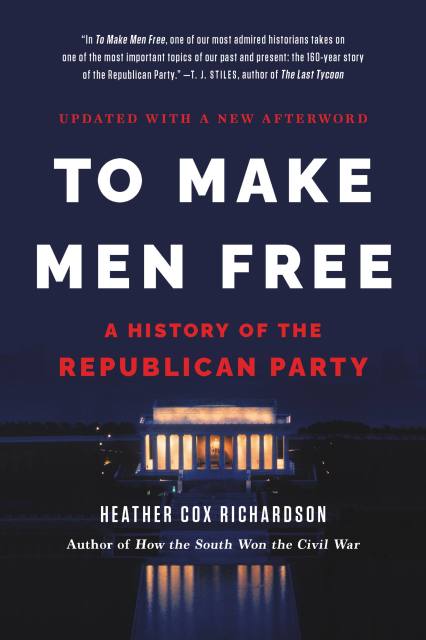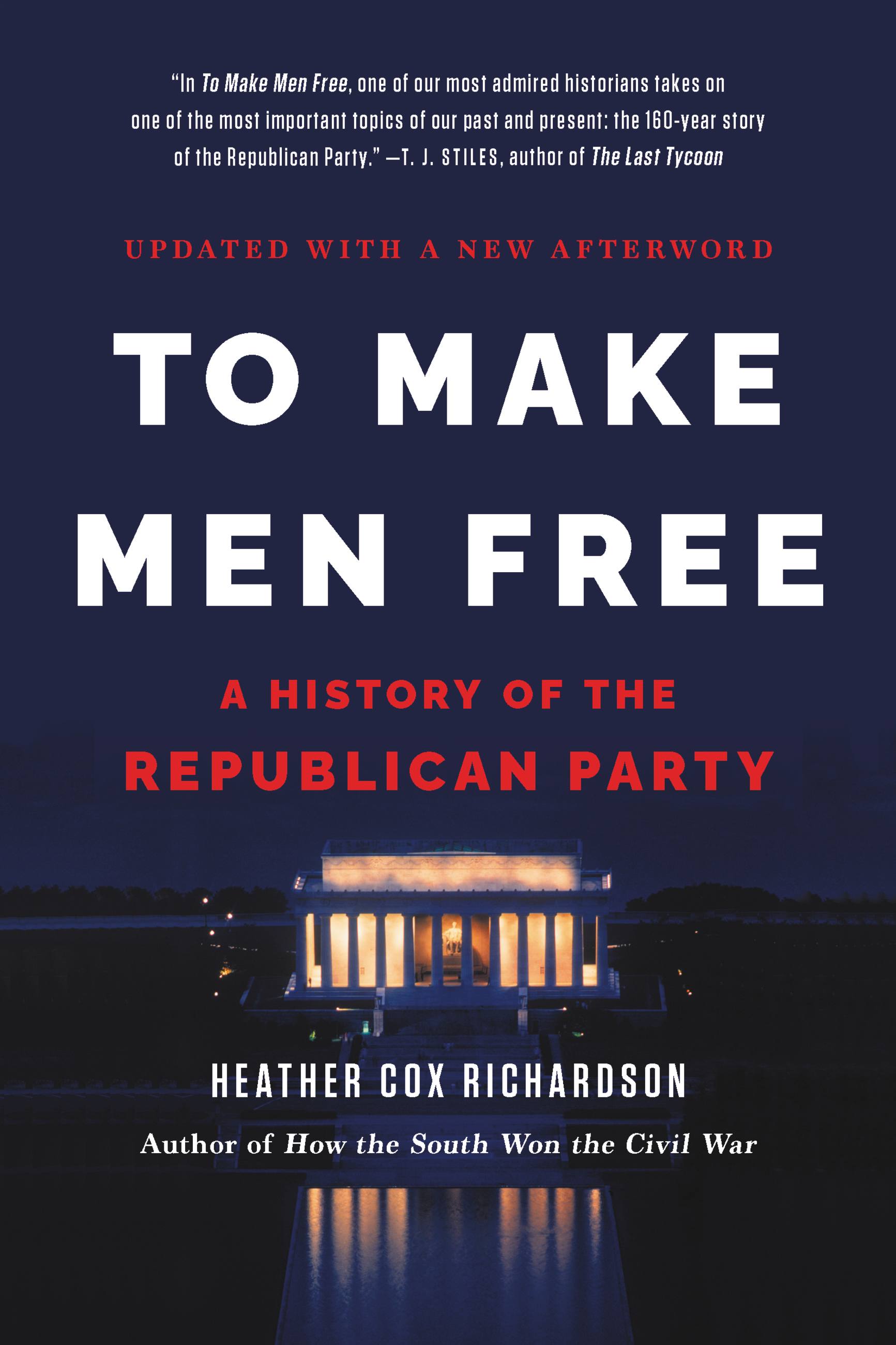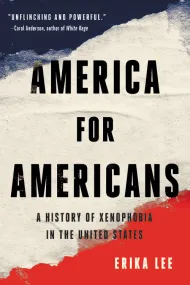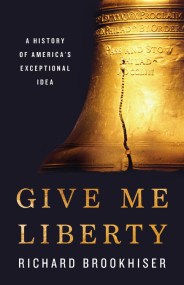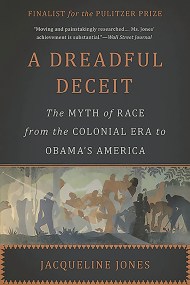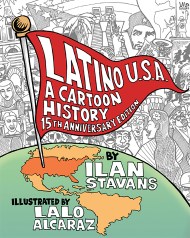Promotion
Use code MOM24 for 20% off site wide + free shipping over $45
To Make Men Free
A History of the Republican Party
Contributors
Formats and Prices
Price
$19.99Price
$24.99 CADFormat
Format:
- Trade Paperback $19.99 $24.99 CAD
- ebook $14.99 $19.99 CAD
- Hardcover $35.00 $44.00 CAD
This item is a preorder. Your payment method will be charged immediately, and the product is expected to ship on or around November 23, 2021. This date is subject to change due to shipping delays beyond our control.
Also available from:
When Abraham Lincoln helped create the Republican Party on the eve of the Civil War, his goal was economic opportunity for all Americans. Yet the party quickly became mired in an identity crisis. Would it be the party of democratic ideals? Or the party of moneyed interests?
In To Make Men Free, acclaimed historian Heather Cox Richardson traces the shifting ideology of the Republican Party from the antebellum era to the Great Recession. While progressive Republicans like Teddy Roosevelt and Dwight Eisenhower revived Lincoln’s vision and expanded the government, their opponents appealed to Americans’ latent racism and xenophobia to regain political power, linking taxation and regulation to redistribution and socialism. In the modern era, the schism within the Republican Party has grown wider, pulling the GOP ever further from its founding principles.
Now with a new epilogue that reflects on the Trump era and what is likely to come after it, To Make Men Free is a sweeping history of the party that was once considered America’s greatest political hope, but now lies in disarray.
Genre:
-
“A readable and provocative account of the many paths that Republicans have taken to their current state of confusion.”New York Times Book Review
-
“The most comprehensive account of the GOP and its competing impulses... an important contribution to understanding where we are today.”Los Angeles Times
-
“The book offers a lively survey of Republican politics in all its diversity, from the ‘transformational presidency' of Abraham Lincoln (to borrow a 21st-century term) to the conservative ascendancy of Ronald Reagan.”Washington Post
-
“A rich portrait of the thinking and times of Abraham Lincoln and those closest to him in the founding of the Republican Party... perceptive and persuasive.... Readers of Richardson's history of the GOP will come away with a good sense of the complex path that led the party to the abnegation of the Lincoln legacy.”Washington Spectator
-
“[Richardson's] theory of the party's historical cycle is intriguing.”New Republic
-
“Sharp and readable.”Open Letters Monthly
-
“[An] opinionated history...Richardson aptly ends by wondering if the modern Republican Party ‘will find a way to stay committed to the ideals of its founders.'”Publishers Weekly
-
“Richardson makes a bold, pertinent argument.... A hard-hitting study that will surely resonate with ongoing attempts to regenerate the GOP.”Kirkus
-
“At its Lincolnian best, the G.O.P. has been not just grand but good. In To Make Men Free, the eminent political historian Heather Cox Richardson superbly brings the Republican Party's history to life, while offering sharp and often surprising interpretations of its rises and declines, when it heeded Lincoln's legacy and when it did not.”Sean Wilentz, author of The Rise of American Democracy: Jefferson to Lincoln
-
“Heather Cox Richardson tells a great story, full of fascinating figures, of how the Republican Party has enjoyed extraordinary political success in a country full of poor people, while doing much to serve the rich. It's a vital chapter in the history of American conservatism.”Eric Rauchway, Professor of History, University of California, Davis
-
“In To Make Men Free, one of our most admired historians takes on one of the most important topics of our past and present: the 160-year story of the Republican Party. From Abraham Lincoln to George W. Bush, from Radical Republicans to Movement Conservatives, Heather Cox Richardson recounts the GOP's dramatic history with unimpeachable insights and crisp, vivid writing. How did the anti-slavery party become the party of the Solid South? How did the anti-trust party of Theodore Roosevelt become the party of Wall Street and the Club for Growth? In this brisk account, Richardson make sense of a twisting tale that shapes our lives every day.”T.J. Stiles, Pulitzer Prize-winning author of The First Tycoon: The Epic Life of Cornelius Vanderbilt
-
“Heather Cox Richardson has written a much-needed book: a comprehensive and balanced history of the Republican Party. The prose is engaging, the research is deep, the argument is persuasive; To Make Men Free is the work of a major talent at the top of her craft.”Ari Kelman, Bancroft Prize-winning author of A Misplaced Massacre: Struggling Over the Memory of Sand Creek
-
“Heather Cox Richardson's concise history of the Republican Party shows how a party that once saw government as the guarantor of equal opportunity for all morphed into today's intransigently anti-government, anti-tax, anti-regulation GOP. Richardson convincingly demonstrates that the Republican Party has oscillated throughout its history between equal opportunity and protection of property rights as its lodestar. Those seeking clues to how the GOP might evolve in the future will want to read this important book.”Ruy Teixeira, co-author of The Emerging Democratic Majority
- On Sale
- Nov 23, 2021
- Page Count
- 560 pages
- Publisher
- Basic Books
- ISBN-13
- 9781541600621
Newsletter Signup
By clicking ‘Sign Up,’ I acknowledge that I have read and agree to Hachette Book Group’s Privacy Policy and Terms of Use
